Patrunale Private Collection
I n the best vintages, it's possible to let the vines mature the grapes and concentrate in them what characterizes our Private Collection: great structure, softness, intensity, complexity, and elegance.
Grape variety
Primitivo
Bottle: 71 GL Glass Collection
Cap: 4 PE-LD Plastic Collection
Capsule: C/90 ALU Aluminum Collection
The labels affixed to the front and back of bottles are not meant for separate disposal from the glass bottle.
For proper recycling, please follow the guidelines provided by your Municipality.



Characteristics and Curiosities
by Fabio Scarpitti, Italian Sommelier Champion
The Primitivo vine is difficult to grow, it suffers the extended drought periods but also the excess of humidity, because of its grapes’ compactness and closeness that easily allow the formation of mold; at the same time, this vine combines a high content of sugar and anthocyanins respectively in the pulp and the skin. The best breeding form is the albarello one (tree breeding), a breeding system used in Puglia since ages. Palamà’s Patrunale doesn’t make an exception: the vineyard grows in Colacune district, in the north area of Cutrofiano, 137 meters above sea level; usually, during harvest time, the workmen team headed by Ninì and his son Michele is equipped with oxygen cylinders to avoid blacking out while harvesting. So far, only three vintages of this wine have been produced: 2012, 2016, 2017. The cru in question, doesn’t reach 1 hectare in extent (0.90 ha), the vine’s density is high, 6.000 logs and produces 50 tons of grapes with whereby is possible to obtain 30 hl of wine, which corresponds to 5.000 bottles. The vineyards are 50 are years old, born on a loamy, clayey, and sandy soil. Because of their age, they are harvested 30 days after all the others Primitivo vines, around the 10th of September, after leaving the grapes to overripe for 10 days – which causes the skin’s carotenoids degradation-. If you find yourself anywhere nearby during the vinification period, have a taste of a Primitivo grape: you’ll be able to grasp the flavors of raisins, dry plums, and other red fruits in jam.
The fermentation is triggered by indigenous yeasts’ pié de cuvée – saccharomyces extracted from younger vines of Primitivo from other vineyards-; and it takes place into steel vats at controlled temperatures until the soon to become Patrunale reaches 15 percent alcohol and 15 grams residual sugar per liter, after spending 30 days macerating on the skins. The absence of the malo-lactic process allows the preservation of this wine’s natural acidity, providing us a product not at all cloying or tiring. After staying for 3 months inside steel vats, in which the wine undergoes bâttonages and micro-oxygenations, the wine is pour inside averagely toasted rover wood barriques of 2nd and 3rd exit, with a subsequent separation from gross lees. One year spent resting is just enough to later bottling the wine.
What should be said about the Patrunale: its color is touching, dark, and intense; on the palate is not that much dry, the right amount of freshness in acidity and vague astringent roughness makes the sweet background bearable. It’s a complex, deep, dusty, and rich wine. On the nose, it hints more to the smell of blueberry-rather than wild berries- and many other fruits in jam, such as blackcurrant- rather than raisin and dry California plum. The toasted wood evokes spicy notes-such as black pepper, vanilla bark, and cinnamon- mixed with fumé aromas and traces of eucalyptus. An authentic “by the book” wine, one of those you would never stop drinking.
Text by Fabio Scarpitti for Scarpitti Distribuzione snc ©
Combination
Pay a visit to Regola district and stop at your trusted butcher’s shop and ask for some finely cut-along-the-joints (crocchi) oxtail..
Text by Fabio Scarpitti for Scarpitti Distribuzione snc ©


